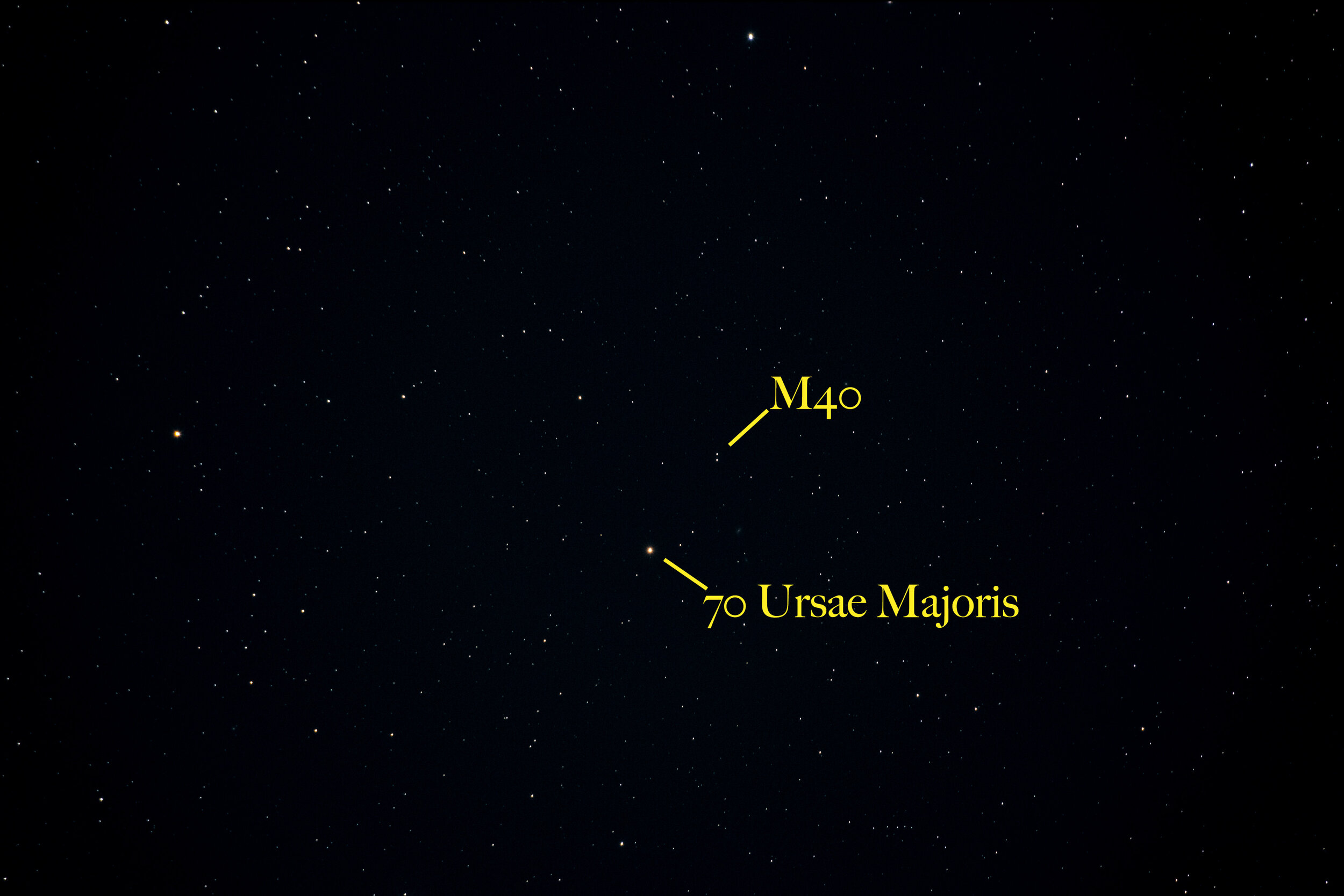M40 - Optical Double Star
Type: Star Pair
Discoverer: Charles Messier, 1764
Size: N/A
Distance: 1860 ly & 490 ly
Constellation: Ursa Major
My Notes: It has been a few months since I practiced astrophotography. I’m happy to say that I didn’t experience any issues setting up my gear, but I forgot my 1.4x teleconverter so I’m having to make do with only my 400mm lens. The rest of the kit is the same. Fuji X-T4 and iOptron Skyguider Pro. Once again I am using my new carbon fiber tripod as described in M60. It makes a world of difference. It is so much easier to dial in objects without having to worry about the whole tripod moving.
I mentioned being out of practice because this double star pair should have been very easy to find, but I spent about 30 minutes looking at star Mizar in Ursa Major’s tail when I should have been looking at star Megrez. I was 1 star off on the tail and for the life of me, I couldn’t figure out why I didn’t recognize any stars around the main star I was focused on. I thought I had completely lost all sense of scale in these months off. No, turns out I just needed to look at the right area of the sky.
I photographed this on August 15, 2021.
This star pair is considered one of the few major goofs on the part of Charles Messier. He was looking for a nebula reported to him by Johannes Hevelius in this area of the sky. Not finding it, he stumbled upon this pair of stars that optically look closely related, but we now know are not related in the slightest. There is almost 1200 light years difference between them. It is also strange that Messier included this at all in his catalog because he was primarily focused on nebula, which was the general term for all cloud like objects at that time, and these pair of stars clearly are not cloud like. It turns out Hevelius had observed 74 UMa, a single star.
Due to this confusion, M40 was considered lost for centuries. It wasn’t until 1966 when John Mallas discovered the correct identification of M40 as a star pair rediscovered by Theodore Winnecke in 1863, who also mistakenly assumed the stars were related.
Messier Notes: (Oct 24-25 1764) “I looked for the nebula which is above the back of the Great Bear, noted in the book, Figures des Astres 2nd Edn. Its 1660 positoin should be R.A. 182d 32’ 41” and Dec. North 60d 20’ 33”. I found by means of this position, two stars, very close together and of equal brightness, about 9th mag., situated at the roof of the tail of the Great Bear. They are difficult to distinguish with an ordinary telescope of 6 feet. Their position is R.A. 182d 45’ 30” Dec. N 59d 23’ 50”. It is presumed that Hevelius mistook these two stars for a nebula.”
Bode Notes: “Two small nebulous stars near each other…”
M40's location in Ursa Major
M40 Location Chart


